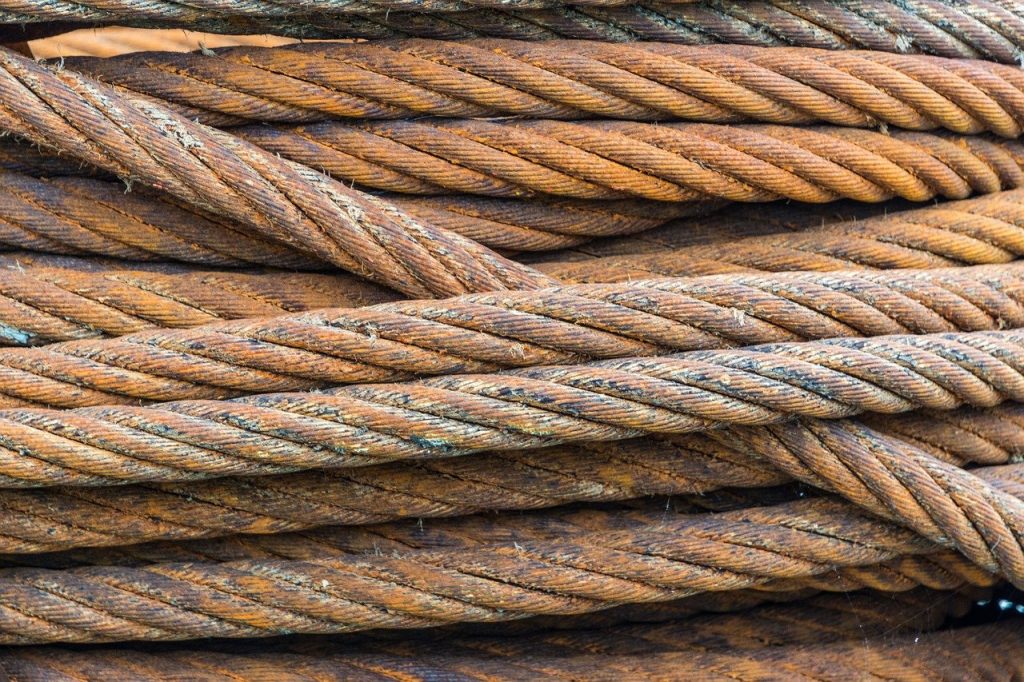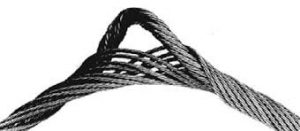Wire Rope – Inspection
Wire rope—Inspection
Explain dangers
Damage from wear and tear can reduce rope strength and capacity, endangering workers who rely on the rope.
Identify controls
Wire rope in continuous service should be checked daily during normal operation and inspected weekly. Rope that has not been used
for a month should be inspected thouroughly.
There are warning signs to look for during inspection. Most of these warning signs indicate that the rope should be replaced.
BROKEN WIRES
Occasional wire breaks are normal and not critical if they are well spaced. Broken wire ends should be removed. Replace rope if there are
• 6 or more broken wires in one lay
• 3 or more broken wires in one strand in one lay
• 3 or more broken wires in one lay in standing ropes.
WORN AND ABRADED WIRES
Replace rope if outer wires
• become flat from friction (i.e., D-shaped)
• become shiny from wear, and
• wear exceeds 1/3 of the wire’s diameter.
ROPE STRETCH AND DECREASE IN DIAMETER
All ropes stretch slightly and decrease in diameter. Replace rope if wear on individual wires exceeds 1/3 of the diameter. Replace 6-strand
rope if stretch exceeds 6 inches per 100 feet.
CORROSION
Difficult to detect because it’s inside the rope.
Look for rust, discolouration, and pitting outside.
CUTS/BURNS
Replace rope if any wires or strands are cut or burned. Damaged ends can be removed and seized. Otherwise rope must be replaced.
BIRDCAGING
Look for strands opening up in cage-like clusters.
Rope must be replaced.

CORE PROTRUSION
Replace rope when inner core starts poking through strands.

KINKING
Kinks seriously reduce wire rope strength.
Sections with kinks should be cut off. Otherwise rope must be discarded.

HIGH STRANDING AND UNLAYING
These will cause the other strands to become overloaded. Replace the rope or renew the end connection to reset the rope lay.
Demonstrate
Review wire rope in use on site. Ask your crew to inspect samples and arrange for repair or replacement as required.
For more information, visit the IHSA website.


